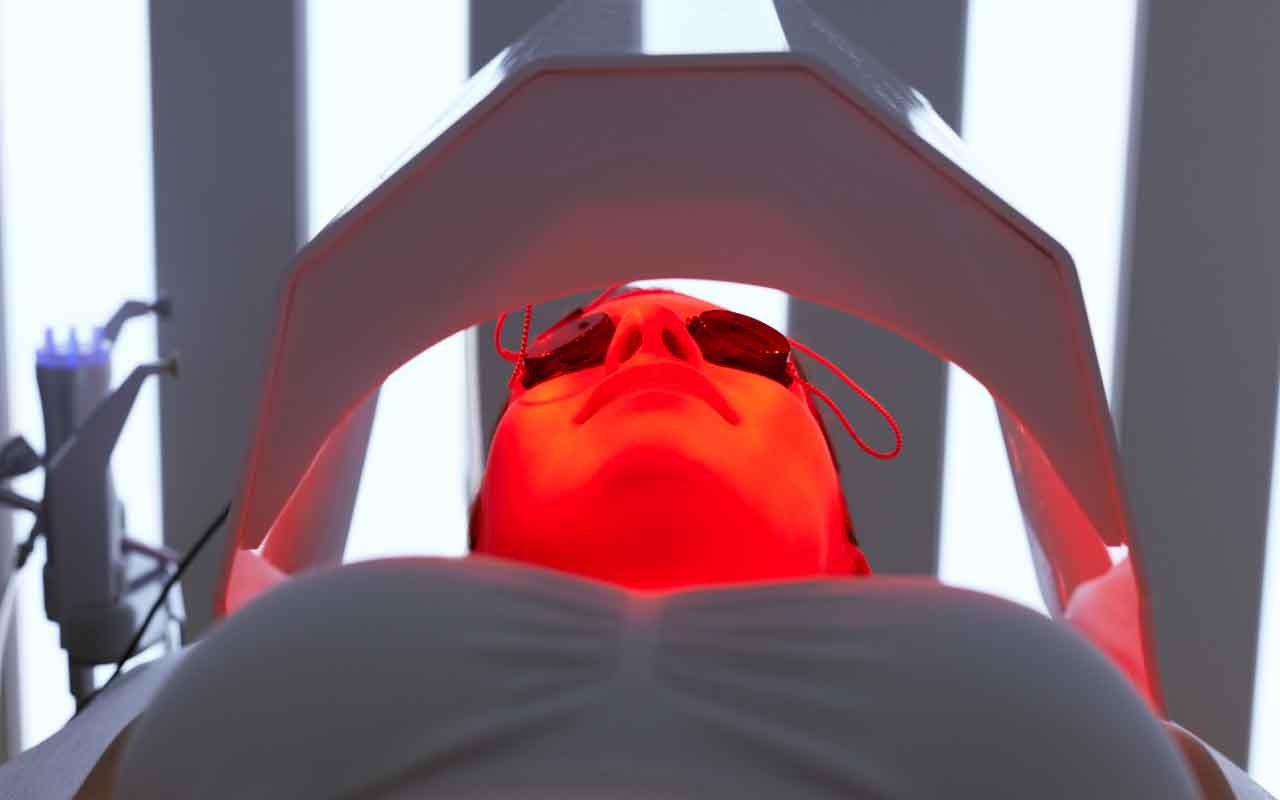Everything You Should Know About Infrared

From linear applications such as in restaurants or used as a heating apparatus to medical use, Infrared lighting offers a plethora of solutions for various industries.
This article will outline what infrared lighting is, how it can be used and the benefits of it. Firstly, we're briefly going to define what exactly infrared is.
What is Infrared?
Infrared radiation (IR), sometimes called infrared light, is electromagnetic radiation (EMR) with longer wavelengths than those of visible light and is therefore generally invisible to the human eye. IR wavelengths extend from the nominal red edge of the visible spectrum at 700 nanometers (frequency 430 THz), to 1 millimetre (300 GHz).
Did you know that most of the thermal radiation emitted by objects near room temperature is infrared? As with all EMR, IR carries radiant energy and behaves both like a wave and like its quantum particle, the photon.
Infrared light can be split into three categories:
According to an article by How Stuff Works, infrared can be split into two different categories:
-
Near-infrared (near-IR) - Closest to visible light, near-IR has wavelengths that range from 0.7 to 1.3 microns or 700 billionths to 1300 billionths of a meter.
-
Mid-infrared (mid-IR) - Mid-IR has wavelengths ranging from 1.3 to 3 microns. Both near-IR and mid-IR are used by a variety of electronic devices, including remote controls.
-
Thermal-infrared (thermal-IR) - Occupying the largest part of the infrared spectrum, thermal-IR has wavelengths ranging from 3 microns to over 30 microns.
The key difference between thermal-IR and the other two is that thermal-IR is emitted by an object instead of reflected off it. Infrared light is emitted by an object because of what is happening at the atomic level.
Infrared lamps can be used in the following ways:
Infrared Applications
Applications-Linear
-
Outdoor comfort heating, restaurant and cafe terraces and other outdoor seating
-
Space heating in factories, sports halls, exhibition halls, work areas, churches, large halls, warehouses and storage areas
-
Domestic heating in bathrooms and living rooms
-
Plastic bottle blowing
-
Plastics thermoforming
-
Paint drying in tunnels and body shops
-
Paper drying in paper mills
-
Powder coating
-
Drying of lacquers and printing inks
-
Heat sterilization
Animal Applications
-
Breeding and rearing of: Pigs, calves, foals, dogs, poultry and other animals.
-
Veterinary clinics, zoos and pet shops
Medical Applications
-
Relieving: Muscular pain, rheumatism, lumbago, neuralgia, colds and other ailments.
-
Helping recovery from injury
-
Providing comfort and cosmetic care
The benefits of Infrared light
Household benefits
Infrared can be used in bathrooms and living rooms. The infrared light provides additional heat but shouldn't be used as a solid form of lighting. It is also advisable to not leave the infrared lights on permanently.
Outdoor benefits
For restaurants or outdoor patios, infrared lights provide a non-obtrusive form of lighting and they emit heat when the evenings get colder.
Culinary benefits
Strip infrared lights are commonly found in restaurants or food halls to prevent freshly prepared, hot dishes from cooling down before being delivered to the customer. The lighting has the potential to draw the moisture from food and dry it out so it is advisable to keep the food under infrared lights for a limited period.
Medical benefits
According to an article on News - Medical and Life Sciences, infrared light proves it has many benefits. These include:
-
Promoting wound healing and tissue repair
-
Stimulating healing of ulcers and slow-healing wounds
-
Improving hair growth
-
Controlling psoriasis
-
Relieving pain
-
Improving skin appearance
-
Reducing the side effects of cancer treatments such as oral mucositis
Benefits to animals
Infrared lights are ideal for animal breeders, the infrared light provides warmth for young animals and encourages their healthy development. Shortwave infrared lamps meet all the relevant requirements necessary for successful breeding. The sun-like radiation creates perfect conditions for raising poultry, pigs, calves, foals and puppies (etc) because it acts directly on the animals' bodies.
Infrared lights are used in a variety of ways for various applications, all of them vastly different from one another. These types of lamps and strip lights are always useful, feel free to browse our website and suss out the various types of infrared lights available to you.